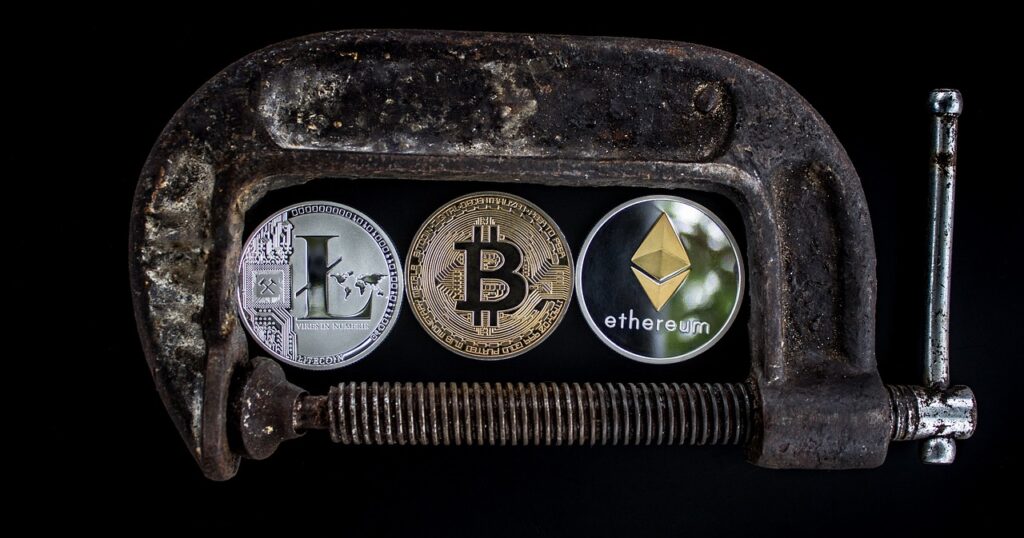Decentralized Finance System vs. Traditional Banking
Decentralized Finance System vs. Traditional Banking

The Evolution of Financial Systems
Over the centuries, financial systems have undergone a remarkable transformation, adapting and adjusting to the changing needs and demands of society. With the advancement of technology and globalization, finance has become an intricate and interconnected web that spans across borders and transcends physical boundaries. From the rudimentary barter system to the sophisticated digital transactions we witness today, the evolution of financial systems has shaped the way we manage, exchange, and invest our money.
In the early stages of human civilization, people relied on a simple system of trade, where goods were directly exchanged for other goods. However, as societies grew larger and became more complex, this system proved to be inadequate. The introduction of currency, such as coins and paper money, marked a significant shift in the evolution of financial systems. This facilitated easier transactions and enabled individuals to store their wealth in a more tangible and convenient form. As economies continued to evolve, banks emerged as intermediaries in the financial system, providing services like lending, depositing, and safeguarding funds. These institutions played a vital role in maintaining economic stability and laying the foundation for the modern financial landscape we navigate today.
The Rise of Decentralized Finance
With the advent of blockchain technology and cryptocurrencies, a new era of financial systems has emerged. Known as decentralized finance, or DeFi, this innovative concept aims to revolutionize traditional banking by empowering individuals to have greater control over their finances. Unlike the traditional banking model, which relies on centralized intermediaries, DeFi operates on a decentralized platform, eliminating the need for middlemen and offering users a faster, more transparent, and cost-effective alternative.
One of the key advantages of decentralized finance is its accessibility. Traditional banking services often require individuals to meet certain criteria, such as minimum deposit amounts or credit scores, which can exclude a significant portion of the population from accessing basic financial services. In contrast, DeFi opens up a world of opportunities for the unbanked and underbanked population, enabling them to transact, save, invest, and earn interest without needing to rely on a centralized institution. This inclusivity has the potential to create a more equitable financial system, empowering individuals who were previously excluded from participating in the traditional banking system.
Understanding the Traditional Banking Model
Traditional banking has been the backbone of the financial system for centuries. It is a model where banks play a crucial role in intermediating between savers and borrowers. In this system, banks collect deposits from individuals and businesses and use these funds to provide loans to those in need. The interest earned on loans is then used to pay interest on deposits, cover operational costs, and generate profits for the bank.
One of the key aspects of the traditional banking model is the concept of fractional reserve banking. Banks are allowed to lend out more money than they actually have in deposits, keeping only a fraction of the deposits as reserves. This system enables banks to create credit and expand the money supply, facilitating economic growth. However, it also poses risks as a bank run or a sudden withdrawal of deposits can lead to liquidity issues and potentially destabilize the banking system.
The Advantages of a Decentralized Finance System
Decentralized finance, also known as DeFi, offers a range of notable advantages over traditional financial systems. Firstly, it promotes financial inclusivity by allowing individuals worldwide to participate in the global economy without the need for intermediary institutions. This means that anyone with an internet connection can access DeFi platforms and engage in a variety of financial activities, such as lending, borrowing, and investing, regardless of their geographical location or socioeconomic background.
Another significant advantage of decentralized finance is the transparency and security it provides to users. Unlike traditional banking systems that operate behind closed doors, DeFi utilizes blockchain technology to record and verify every transaction on a public and immutable ledger. This ensures that all activities are transparent and can be audited by anyone, eliminating the possibility of fraudulent or corrupt practices. Additionally, the decentralized nature of these systems reduces the risk of hacking or data breaches, as there is no centralized point of attack for malicious actors.
The Benefits of Traditional Banking Services
Traditional banking services offer several advantages to individuals and businesses alike. Firstly, the presence of physical branches allows for face-to-face interactions between customers and bank representatives. This personal touch provides a sense of security and trust, as customers can discuss their financial needs and concerns directly with a knowledgeable professional. Additionally, traditional banks offer a wide range of services, such as checking accounts, credit cards, loans, and investment opportunities. These comprehensive offerings provide convenience and allow customers to access multiple financial services under one roof.
Moreover, traditional banks often have robust customer service departments, ensuring that any issues or concerns are promptly addressed. Customers can visit a local branch or contact a customer service representative over the phone for assistance or clarification. This personalized customer support helps build long-term relationships and enhances customer satisfaction. Furthermore, traditional banks typically have advanced security measures in place to protect customers’ funds and personal information. From encrypted data systems to physical security measures, such as vaults and security cameras, traditional banks prioritize the safety and confidentiality of their customers’ financial transactions.
Comparing Accessibility in Decentralized Finance and Traditional Banking
Decentralized finance and traditional banking systems differ significantly in terms of accessibility. In the world of decentralized finance, anyone with an internet connection and a compatible device can access these financial services. There are no geographic boundaries or lengthy application processes to navigate.

On the other hand, traditional banking often requires individuals to physically visit a brick-and-mortar bank or go through a complex application process. Opening a bank account, applying for loans, or other financial services can be time-consuming and dependent on various factors such as credit history or employment status. Traditional banking systems may also have limited accessibility in remote or underdeveloped areas, leaving many individuals without access to basic financial services. However, traditional banking does offer the advantage of personalized assistance and face-to-face interactions, which can be beneficial for individuals who prefer a more hands-on approach to managing their finances.
In comparing accessibility between decentralized finance and traditional banking, it becomes evident that decentralized finance has made significant strides in democratizing financial services. It has eliminated many of the barriers associated with traditional banking and opened up opportunities for individuals who were previously excluded from the formal financial sector. However, it is essential to recognize that traditional banking still plays a critical role, especially for those who value in-person assistance and prefer a more established and regulated financial system.
Exploring the Role of Intermediaries in both Systems
In both traditional banking and decentralized finance systems, intermediaries play a crucial role in facilitating financial transactions. These intermediaries act as bridges between individuals or organizations, ensuring that funds are securely transferred and transactions are conducted smoothly.

Within the traditional banking model, intermediaries take the form of banks and financial institutions. They serve as trusted entities that hold deposits, issue loans, and provide a wide array of financial services. Banks act as intermediaries by pooling funds from savers and redistributing them to borrowers, thereby enabling the smooth flow of capital in the economy. Furthermore, banks also act as intermediaries in the realm of international transactions, facilitating the transfer of funds between different countries.
Similarly, in decentralized finance systems, intermediaries exist in the form of decentralized applications (DApps) and smart contracts. These digital intermediaries eliminate the need for a centralized authority by utilizing blockchain technology. Smart contracts are self-executing contracts with the terms of the agreement directly written into the code. By removing the need for third-party intermediaries, decentralized finance aims to create a trustless and transparent system where transactions can be processed securely and efficiently.
While both traditional banking and decentralized finance rely on intermediaries, they differ in their approach. The traditional banking model relies heavily on trusted third-party intermediaries, such as banks, to facilitate transactions and ensure the security of funds. On the other hand, decentralized finance seeks to eliminate the need for centralized intermediaries by leveraging blockchain technology. By doing so, it aims to create a system that is more accessible, transparent, and resilient.

Analyzing the Security Measures in Decentralized Finance and Traditional Banking
Security measures play a crucial role in both decentralized finance and traditional banking systems. In decentralized finance, blockchain technology forms the foundation, offering a decentralized and transparent ledger that ensures the security of transactions. By distributing transaction records across multiple nodes, decentralized finance deters potential attackers, as altering or manipulating the data within the blockchain becomes highly challenging. Moreover, decentralized finance platforms often employ advanced encryption techniques and multi-signature wallets to safeguard users’ assets, adding an extra layer of security.
On the other hand, traditional banking systems prioritize security through various means. Banks implement robust security protocols and utilize secure servers and communication channels to protect sensitive financial information. Additionally, banks frequently employ authentication tools such as passwords, personal identification numbers (PINs), and secure tokens for transaction verification. Regular audits and compliance with regulatory standards further enhance the security measures within traditional banking. While centralized systems may face risks of data breaches or internal misconduct, established banks invest heavily in security measures to maintain the trust of their customers.
• In decentralized finance, blockchain technology ensures the security of transactions by offering a decentralized and transparent ledger.
• Decentralized finance platforms distribute transaction records across multiple nodes, making it challenging for potential attackers to alter or manipulate data within the blockchain.
• Advanced encryption techniques and multi-signature wallets are often employed in decentralized finance platforms to safeguard users’ assets.
• Traditional banking systems prioritize security through robust security protocols and secure servers and communication channels.
• Authentication tools such as passwords, PINs, and secure tokens are commonly used in traditional banking for transaction verification.
• Regular audits and compliance with regulatory standards further enhance the security measures within traditional banking.
• Established banks invest heavily in security measures to maintain the trust of their customers despite risks of data breaches or internal misconduct.
Examining the Impact of Technology on Financial Systems
Technology has had a profound impact on financial systems, revolutionizing the way transactions are conducted and disrupting traditional models. The advent of online banking, mobile payment platforms, and blockchain technology has transformed the financial landscape, making transactions faster, more efficient, and more secure. With just a few taps on a smartphone, individuals can now transfer funds, pay bills, and even invest in financial markets, all from the comfort of their own homes.
One significant trend shaping the future of financial systems is the rise of financial technology, or fintech, companies. These innovative startups leverage technology to provide financial services in a more convenient and accessible manner. From peer-to-peer lending to robo-advisors, these fintech firms are challenging traditional banking institutions by offering solutions that are faster, cheaper, and tailored to the needs of tech-savvy consumers. As technology continues to advance, we can expect further integration of financial services into our digital lives, blurring the lines between technology and finance even more.
The Future of Finance: Will Decentralized Systems Replace Traditional Banking?
Decentralized finance, also known as DeFi, has been making waves in the financial industry in recent years. Built on blockchain technology, DeFi offers a peer-to-peer financial system that allows individuals to access financial services without the need for intermediaries like banks. With its promise of transparency, efficiency, and autonomy, many proponents believe that DeFi has the potential to revolutionize the traditional banking model.
However, it is important to note that while DeFi offers exciting possibilities, it may not completely replace traditional banking systems in the near future. Traditional banking services, such as loans, mortgages, and credit cards, still play a crucial role in the lives of many individuals and businesses. These services are backed by established financial institutions that have built trust and infrastructure over centuries. Additionally, traditional banking systems are regulated by governments and central banks, providing a level of protection and stability that may be difficult to replicate in a purely decentralized system. Despite the rise of DeFi, it is more likely that we will see both traditional banking and decentralized systems coexist, each serving different needs and preferences in the future of finance.
What is the evolution of financial systems?
Financial systems have evolved from traditional banking models to more decentralized systems.
Why is decentralized finance on the rise?
Decentralized finance provides individuals with more control over their own financial transactions and eliminates the need for intermediaries.
What is the traditional banking model?
The traditional banking model involves a centralized authority, such as a bank, that holds and manages individuals’ finances.
What are the advantages of a decentralized finance system?
A decentralized finance system offers greater transparency, security, and control over financial transactions.
What are the benefits of traditional banking services?
Traditional banking services provide convenient access to loans, credit cards, and other financial products.
How does accessibility in decentralized finance compare to traditional banking?
Decentralized finance systems often provide more accessible financial services to individuals who may not have access to traditional banking institutions.
What is the role of intermediaries in both decentralized finance and traditional banking systems?
Intermediaries in decentralized finance and traditional banking systems act as middlemen who facilitate financial transactions and provide additional services.
How do security measures in decentralized finance and traditional banking compare?
Both decentralized finance and traditional banking systems employ security measures to protect users’ financial information, although the specific methods may vary.
How has technology impacted financial systems?
Technology has revolutionized financial systems by enabling faster transactions, increased accessibility, and the development of decentralized finance platforms.
Will decentralized systems replace traditional banking in the future?
The future of finance is uncertain, but decentralized systems have the potential to significantly transform the traditional banking industry.
Todays Featured Product:
Buy, exchange and grow your crypto securely with a Ledger hardware wallet, combined with the Ledger Live app. It’s never been easier to keep your crypto safe and accessible. Buy direct from Ledger.com and get todays Special Offers Here.




